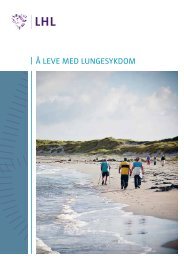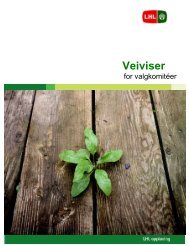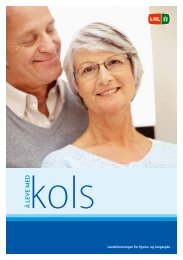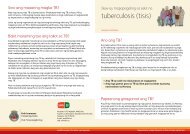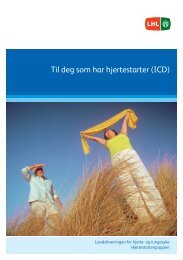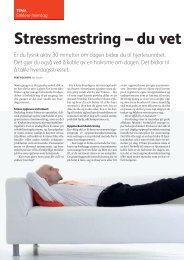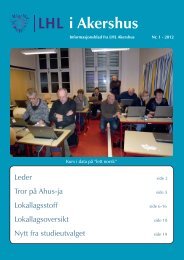You also want an ePaper? Increase the reach of your titles
YUMPU automatically turns print PDFs into web optimized ePapers that Google loves.
BE KIND <strong>TO</strong> YOUR HEART – A FEW RULES<br />
The treatment you have received has repaired the damage caused by your illness, but<br />
the treatment has not dealt with the cause of your heart problem. Genetically inherited<br />
problems can’t be dealt with, but there are a number of things you can do by assuming<br />
responsibility for your behaviour and habits to reduce risk factors. Many people find it<br />
difficult to start down this path. We have therefore included some advice and tips to get<br />
you on your way to a healthier lifestyle.<br />
Stop smoking<br />
– Smoking is one of the key risk factors that cause cardio-vascular diseases. Smokers are<br />
2-3 times more exposed to the risk of cardiovascular disease than non-smokers.<br />
– Smoking has a negative effect on the composition of fatty acids in the bloodstream<br />
and reduces the concentration of beneficial cholesterol while increasing the amount of<br />
undesirable cholesterol.<br />
– An unfavourable composition of fatty acids in the blood results in thicker fatty deposits<br />
in the veins and arteries and accelerates the process of arteriosclerosis.<br />
– Tobacco contains a number of elements and compounds that can damage blood vessel<br />
walls and further aggravate the process of arteriosclerosis.<br />
– Tobacco smoke makes platelets stickier and increases the tendency for the plates to<br />
stick together, which in turn increases the risk of thrombosis.<br />
– If you stop smoking the beneficial cholesterol will quickly increase, and the risk of<br />
cardiovascular disease incurring will be halved within one year.<br />
– After only five years the risk of dying due to a heart attack will be the same as for a<br />
non-smoker.<br />
Good advice on how to stop smoking:<br />
– Take your time in building up your motivation.<br />
– Choose a date when you will stop smoking.<br />
– If possible, stop smoking together with a relative or friend.<br />
– Make a list of the advantages and disadvantages of stopping smoking.<br />
– Cut down on the number of cigarettes you smoke daily as you approach your<br />
stop date.<br />
– Change your smoking habits; smoke at other times and in other places.<br />
– Make a plan for what to do when the craving for tobacco comes.<br />
– Recruit support from your family, friends and colleagues.<br />
– Take it one day at a time. Remember to reward yourself!<br />
– Various aids containing nicotine as substitutes for tobacco are available at many<br />
stores and all chemist shops. These include chewing gum, plasters, tablets and<br />
inhalers.<br />
– You will probably find, as do most people, that your doctor is you most<br />
important ally. He or she will be able to provide you with aids and medicines that<br />
will dampen the craving for nicotine and make it easier to stop smoking.<br />
– Join a stop-smoking course. There are also a number of Internet-based follow<br />
up sites.<br />
– Call Røyketelefonen (The Smoker’s Phone), 800 400 85. Experts on how to stop<br />
smoking will be able to provide you with excellent advice.




